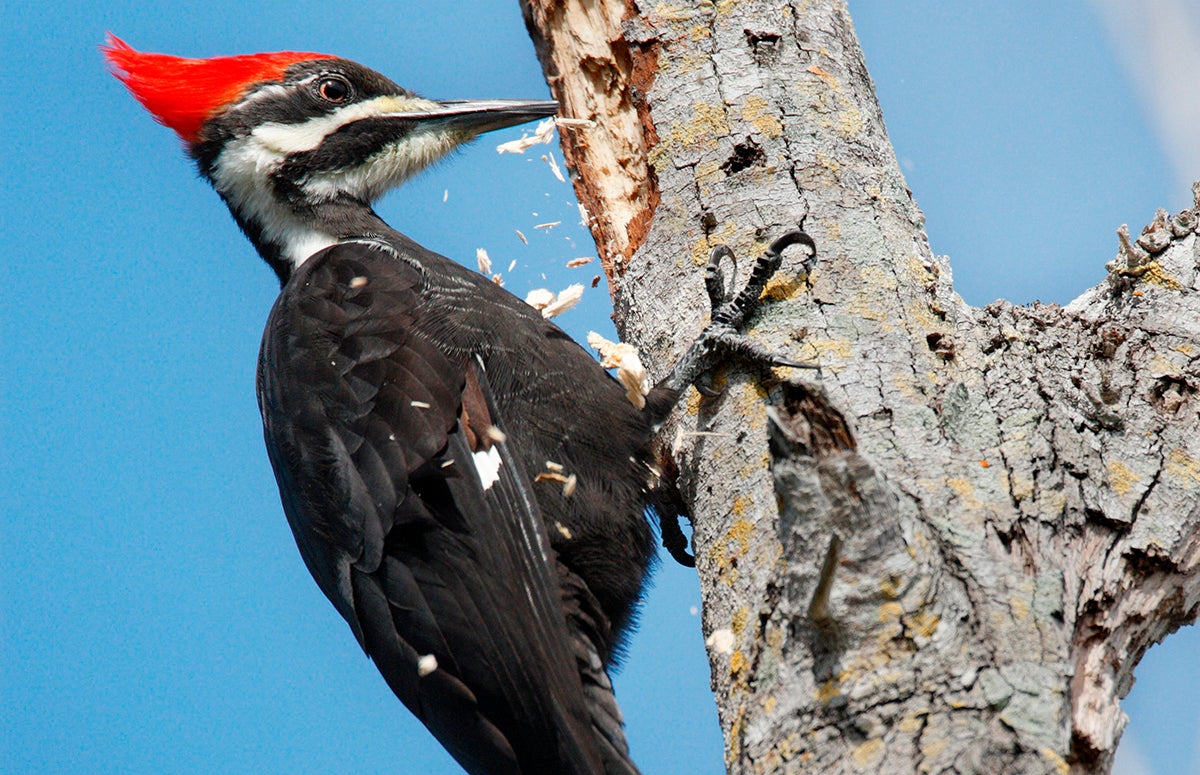Uncovering Woodpeckers in Florida: Species Variety and Nature
Uncovering Woodpeckers in Florida: Species Variety and Nature
Blog Article
Discover the Fascinating Globe of Woodpeckers: Whatever You Need to Know
The world of woodpeckers is a realm full of one-of-a-kind actions, intricate adjustments, and a diverse range of types. From their habitats and distribution patterns to their feeding routines and specialized physiological functions, woodpeckers have actually long astounded the rate of interest of ornithologists and nature fanatics alike. Recognizing the intricacies of these interesting birds supplies a glance right into the intricate interaction between their biology and the setting. As we explore the world of woodpeckers even more, we uncover a wide range of information that sheds light on their importance in environments and the challenges they deal with in an ever-changing globe.
Woodpecker Habitats and Circulation
Woodpeckers live in a varied variety of environments worldwide, showcasing adaptability in their distribution patterns. These resilient birds are found in forests, woodlands, savannas, and deserts across various continents, demonstrating their ability to thrive in different weather conditions. In North America, for example, woodpeckers can be identified in both coniferous and deciduous woodlands, utilizing their solid beaks to forage for bugs and develop nesting dental caries in trees. Similarly, in Africa, particular woodpecker varieties have adapted to dry atmospheres, such as the acacia woodlands, where they play a critical role in regulating insect populaces.

Feeding Behaviors and Diet Plan
Amongst the different aspects of their behavior, woodpeckers exhibit unique feeding practices and nutritional choices. These birds are mainly insectivores, with a diet plan that consists of ants, beetles, caterpillars, and various other insects discovered in trees. Woodpeckers use their strong beaks to pierce right into the bark of trees, probing for insects and larvae concealed underneath the surface. Along with bugs, woodpeckers additionally consume nuts, seeds, fruits, and sap. Some types have specialized tongues with barbed tips that aid them remove pests from explanation crevices in wood.
Woodpeckers are understood for their drumming habits, which offers not just to communicate with other woodpeckers yet likewise to locate food. The rapid drumming audio is developed by the bird pecking on visit the site powerful surfaces like dead trees or steel posts. This behavior can bring in bugs hidden in the timber, enabling the woodpecker to detect their existence and eat them.
Special Adaptations for Tree Climbing
In their experienced quest of insects concealed within tree bark, woodpeckers have actually evolved amazing physiological features that equip them with special adaptations for reliable tree climbing. Woodpeckers have strong neck muscular tissues and an one-of-a-kind head structure that take in the influence of consistent pecking, permitting them to climb vertically without creating injury to their brains. These adaptations display the unbelievable transformative style that enables woodpeckers to browse trees with precision and efficiency.
Diverse Woodpecker Variety Worldwide
With over 200 various types spread out across numerous habitats worldwide, the household of Picidae encompasses a remarkable diversity of woodpeckers. These birds can be located in forests, woodlands, savannas, and also metropolitan locations, showcasing their adaptability to different environments. From the famous Northern Flicker article source in North America to the vibrant and evasive Crimson-backed Flameback in Asia, each woodpecker types displays unique attributes in terms of plumage, habits, and environment preference.
Woodpeckers differ considerably in size, with the petite Downy Woodpecker measuring around 6-7 inches in length, while the powerful Lineated Woodpecker can get to up to 17 inches - Woodpeckers in Florida. Their beaks additionally are available in different sizes and shapes, reflecting their feeding routines. Some varieties focus on drawing out insects from tree bark, like the Acorn Woodpecker, while others, such as the Black-cheeked Woodpecker, eat fruits and seeds
/https://tf-cmsv2-smithsonianmag-media.s3.amazonaws.com/filer_public/30/ac/30acf469-09cd-4fcc-a812-1aa30f477578/aprmay2024_l09_woodpeckers.jpg)
Preservation Efforts and Difficulties
Conservation efforts for woodpecker populations are essential in reducing the influence of environment loss and various other risks dealing with these diverse avian varieties. Woodpeckers deal with different difficulties to their survival, largely due to logging, urbanization, environment modification, and invasive types. To deal with these problems, conservation initiatives concentrate on securing and recovering woodpecker habitats, carrying out lasting forestry techniques, and raising awareness regarding the value of these birds in communities.
One substantial obstacle in woodpecker preservation is the fragmentation of their environments, resulting in isolated populaces that are extra vulnerable to termination - Woodpeckers in Florida. Conservationists function to produce wildlife hallways and protected locations that link these fragmented environments, enabling woodpeckers to move between different areas for feeding, reproducing, and shelter

Verdict
To conclude, woodpeckers are remarkable birds with unique adjustments for tree climbing and feeding actions. They can be discovered in diverse environments worldwide, encountering conservation obstacles as a result of habitat loss and human activities. Comprehending their habitats, diet plans, and behaviors is important for preservation efforts to protect these vital bird types. More study and preservation actions are needed to guarantee the survival of woodpeckers in the wild.
Report this page